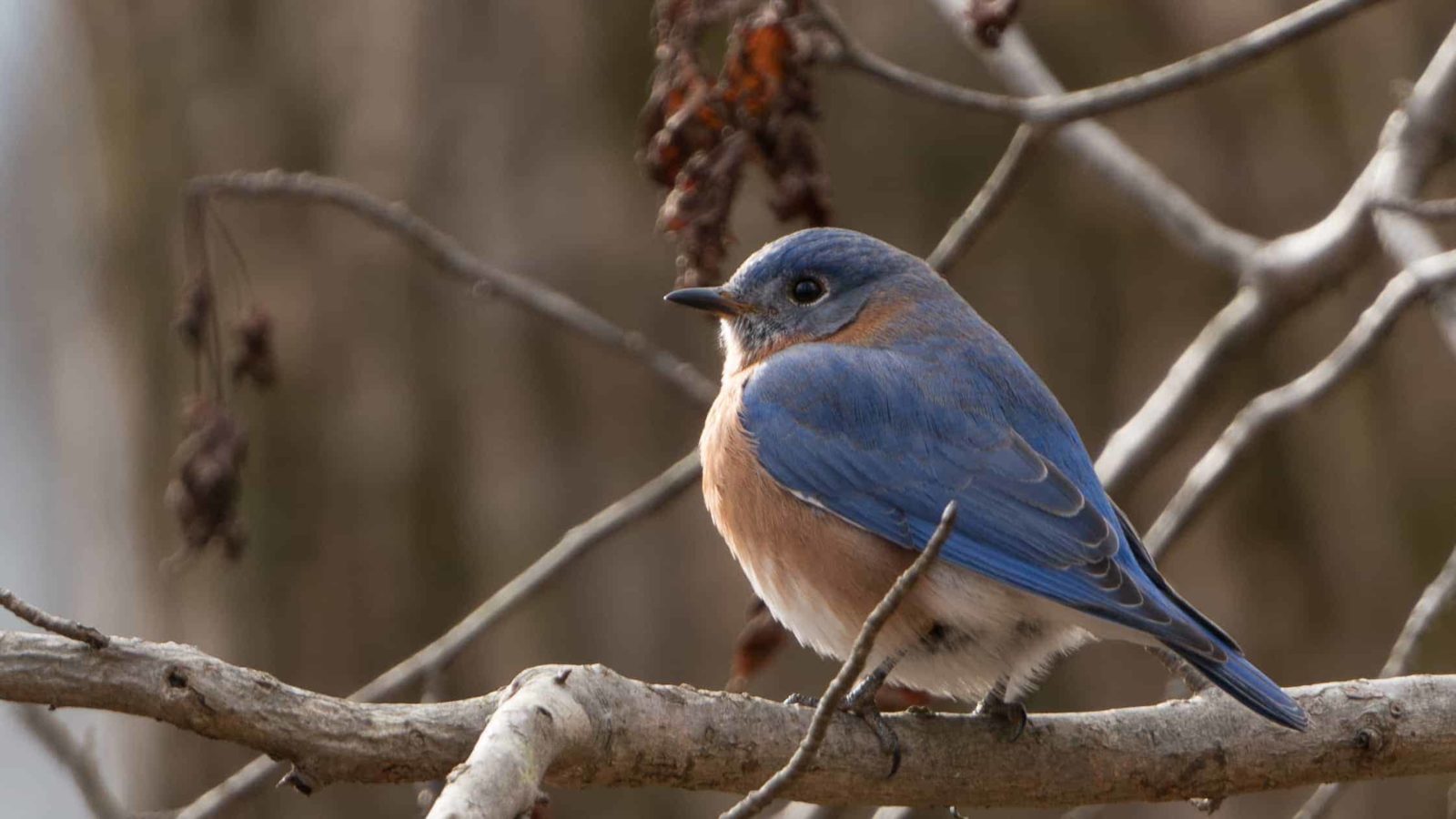Have you ever seen a bluebird? If you have, it is easy to understand how this beauiful bird got its name. How the larger American robin got its name is more interesting though. Homesick settlers (maybe even the Pilgrims) named our robin after their favorite bird, the robin red-breast, Britain’s National Bird. Both birds have similar colors, but otherwise they do not look very much alike, and robin red-breast is much smaller.
Bluebirds and Robins: What do they have in common? For one thing, some of them, but not all, will have spent the winter here in New England. Even in a cold and snowy winter, many people saw flocks of bluebirds and robins in their yards or in meadows. Many thought that spring would not be far behind, and how wrong they were.
Bluebirds and robins are cousins, and both belong to the Thrush family. Both hatch from bluish eggs, and both have a spotted breast when they are young. Both like to eat fruits and berries, which keep them from going hungry during cold northern winters. We have seen robins catching earthworms, but they will also eat insects and grubs during the summer, just as their cousins the bluebirds do.
Next time you see one of these birds, take a few minutes and listen to their songs. Both are really beautiful. The bluebird’s soft and sweet melody is a series of short whistled notes, but the robin’s is loud and clear and is also whistled, longer and more musical.
Robins grow 9 to 11 inches and often nest in near our homes. Their less common cousins reach only 7 inches and like open meadows and orchards. Robins have an easy time finding a place to nest, sometimes built on the branch of a tree or in a bush. Bluebirds have a much more difficult time finding a place to nest. They prefer to nest in old holes made by woodpeckers in trees or hollow fence posts. These places are not always free, but we can help them find a place to live by putting out bluebird houses on fences in old fields.
Berkshire naturalist Thom Smith looks for signs — and songs — of spring in the hills. In the photo at the top, an Eastern bluebird perches on a branch. (Courtesy photo by Ken Thomas.)

